Quick Airline Information:
✈Airline IATA* code: DE
✈Airline ICAO* code: CFG ✈Founded: 21 December 1955 ✈Website: www.condor.com✈Alliance: None✈History
✈Operations and Destinations 🌍
✈Fleet ✈️
✈Photo Slide 📷✈Safety Video 🎬
✈Airline reviews ⭐
*IATA: (International Air Transport Association)
*ICAO: (International Civil Aviation Organization)
History Menu:
Condor can trace its roots back to the mid 1950's when the demand for air travel increased, after the introduction of safer and more reliable prop-planes that could fly more passengers and further away from home. The idea was to create an airline that would dedicate itself to leisure destinations, so an airline company was founded on 21 December 1955 as Deutsche Flugdienst GmbH and commenced operations on 29 March 1956, with a large scale of round trips to the "Holy Land" and to Egypt. Within the first year of operation, Majorca, and the Canary Island of Tenerife were soon added to the flight schedule.
Deutsche Flugdienst GmbH,was split between Norddeutscher Lloyd (27.75%), Hamburg America Line (27.75%), Deutsche Lufthansa (26%), and Deutsche Bundesbahn (18.5%). The initial fleet consisted of three 36-passenger Vickers VC.1 Viking aircraft that were based at Frankfurt Airport, the Lufthansa hub. It also operated soon after Convair 240/440 in 1957. In 1959, Lufthansa took over 95.5% of the stake, thus creating its first postwar subsidiary.
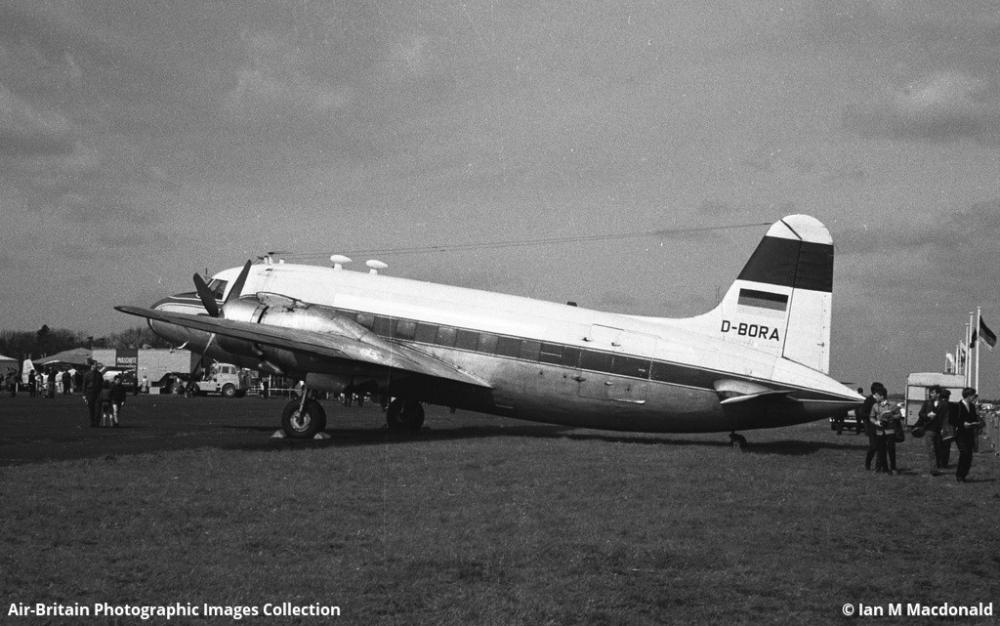
In 1961, Deutsche Flugdienst took over its rival Condor-Luftreederei (which had been founded in 1957 by Oetker), subsequently changing its name to Condor Flugdienst GmbH, thus reintroducing the "Condor" name with Lufthansa (there was a Brazilian subsidiary named Syndicato Condor between 1928 and 1943). In 1964 the airline also operated its first Vickers Viscount aircraft, the Boeing 727-100 in 1965 and in 1966, the long haul business was launched, with flights to Thailand, Ceylon, Kenya, and the Dominican Republic. With the long haul services the Boeing 707 was also introduced to the fleet from 1967.
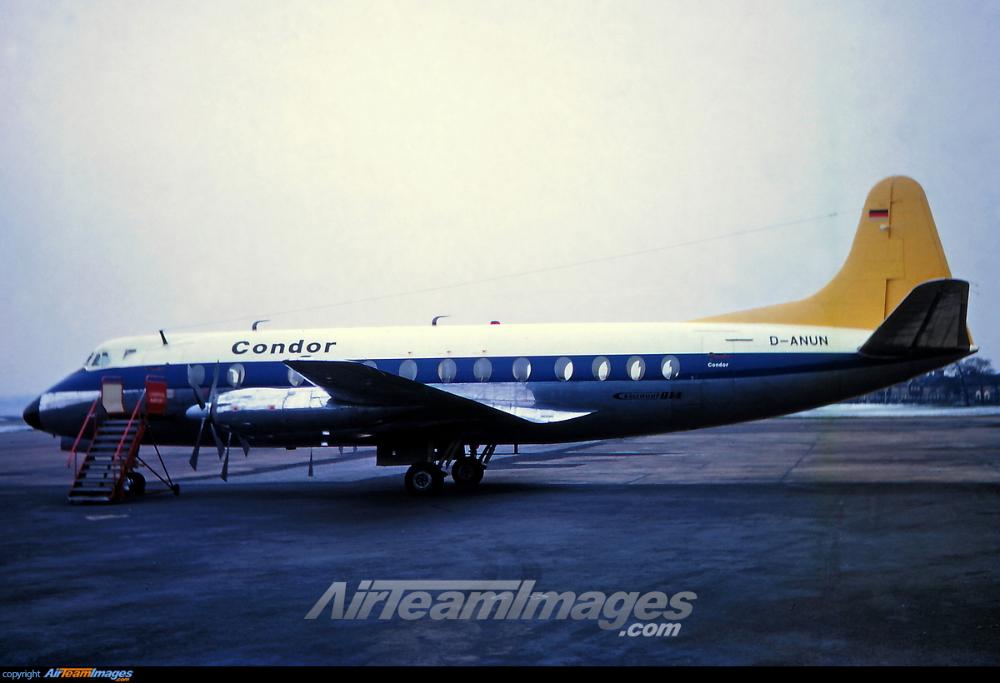
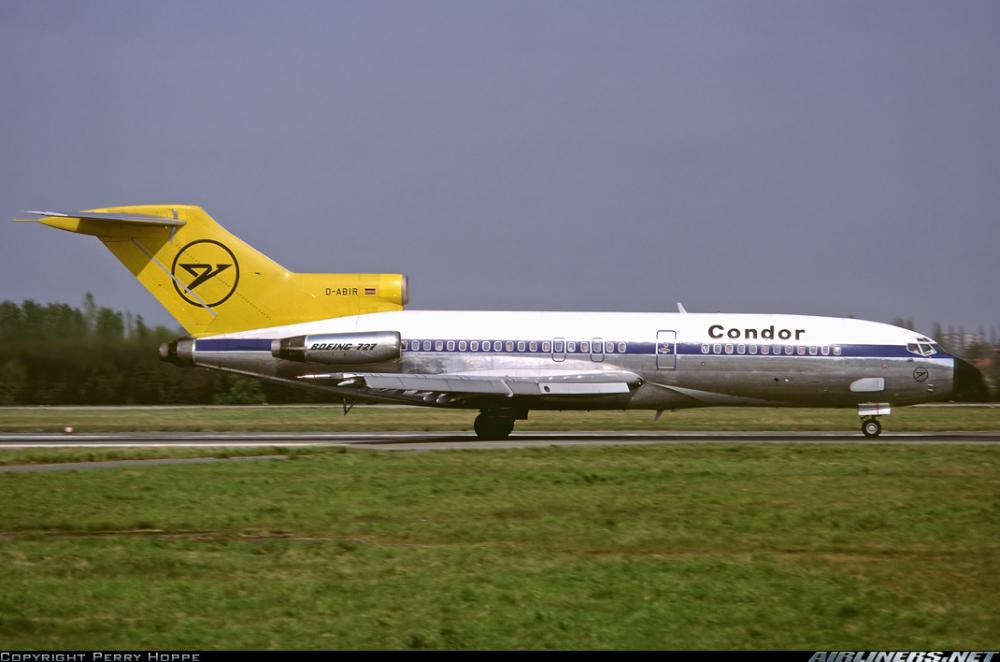

A further milestone in the company's history followed in 1971. Condor was the world's first leisure airline to fly the Boeing 747 "Jumbo". Condor operated the aircraft with up to 494 passengers from Frankfurt, Hanover, Hamburg and Cologne-Bonn to Spanish vacation destinations such as Majorca, Malaga and Las Palmas. During the winter season, the Jumbo operated long haul flights for the first time, to destinations such as Karachi, New-Delhi, Bangkok and Colombo in Sri Lanka from Frankfurt. At the end of the decade, in 1979, the fleet expanded with the introduction of the first DC-10 from the manufacturer McDonnell Douglas, two additional DC-10s were soon added to the fleet, which led them taking over from the Boeing 747s the next decade.
It also introduced the first Airbus A300 into the fleet in 1979, which served the fleet for 10 years.
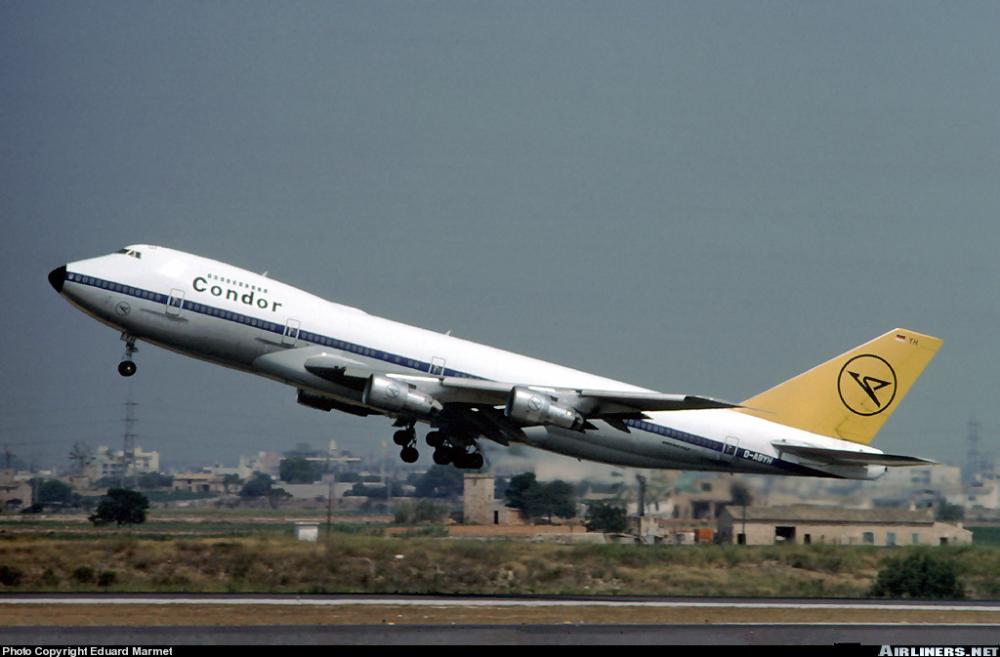
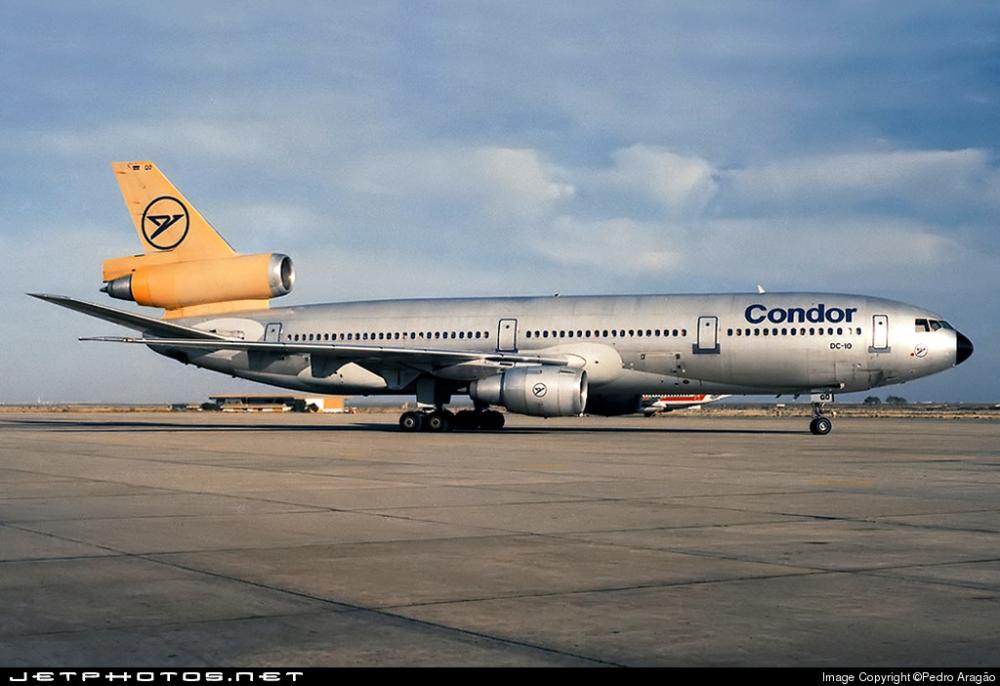
During the 1980's, the Condor Individuell system was launched, allowing direct flight bookings by passengers without the need of a travel agency. During the decade it also introduced the Boeing 737-200 in 1981 and the Airbus A310 in 1985. During the years 1990 to 1992, Condor employed the modern Boeing 757 and Boeing 767 jets into service. As an additional highlight, in 1991 Condor introduced the Comfort Class.
In 1993 it operated the Boeing 747-400 for 3 years for high demand routes across the Atlantic. For Condor's 40th birthday celebration in 1996, the airline orders twelve Boeing 757-300, which is the launch customer for the type. In 1997, Condor Flugdienst GmbH was acquired by C&N Touristic AG (today Thomas Cook AG). With the merger of Condor Flugdienst GmbH, Deutsche Lufthansa AG and the other shareholding company, KarstadtQuelle AG, created the basis for an integrated tourism group with a European format, both partners held 50 percent in the company.
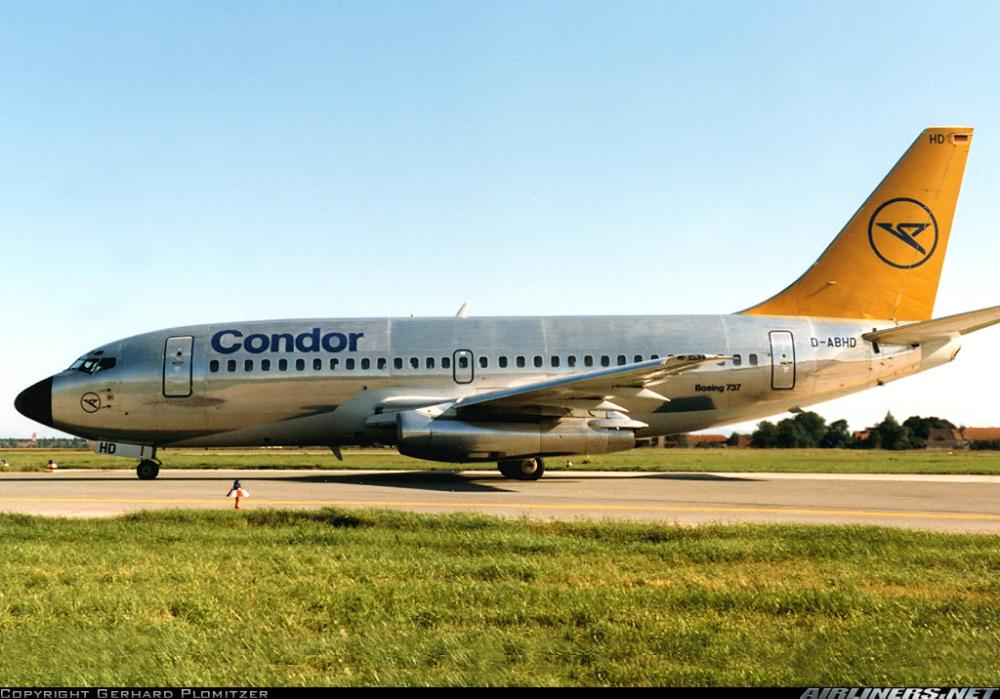
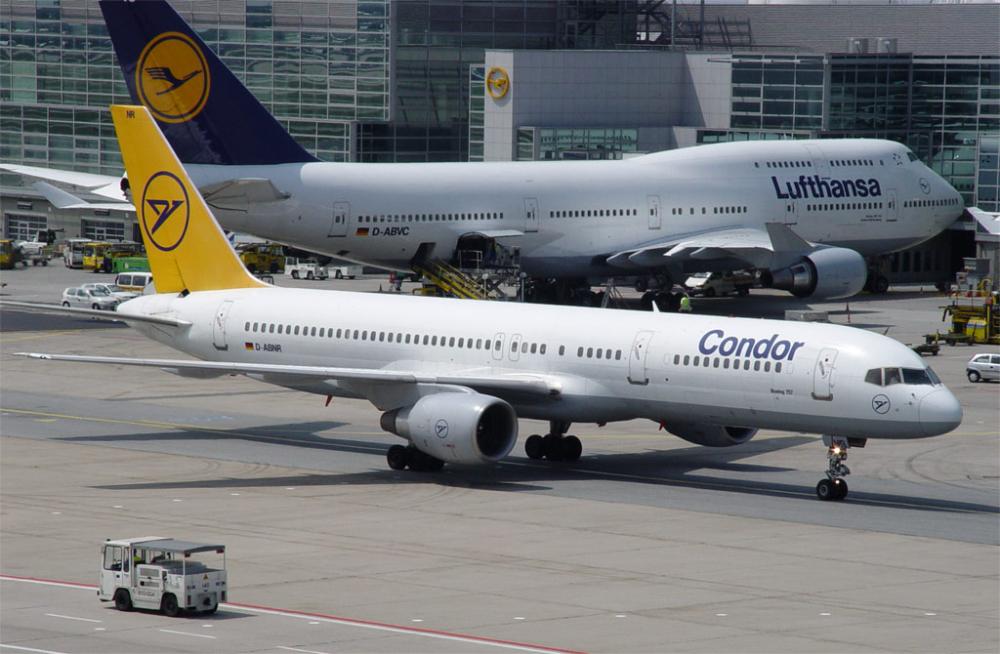
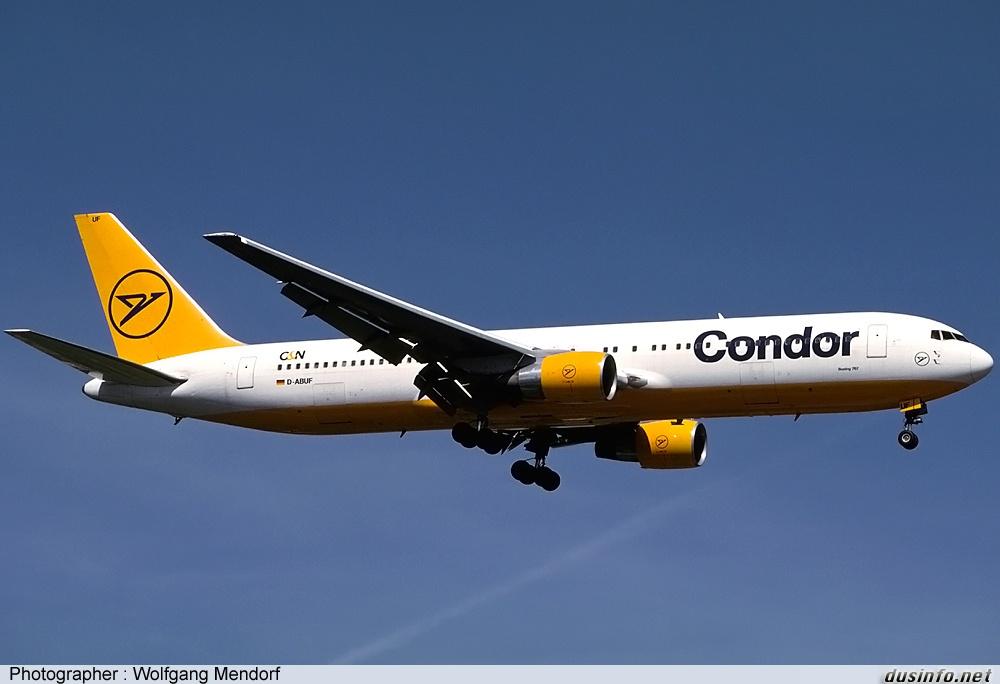
In 1998, the leisure airline founded "Condor Berlin GmbH", a 100 percent subsidiary with its headquarters in Berlin Schönefeld. By the end of the year, Condor received its first of six Airbus A320-200 aircraft, which begun replacing the Boeing 737 short-haul airliners.
From 2000 onwards, the Condor shares held by Lufthansa were gradually acquired by Thomas Cook. The process of transforming Condor from a Lufthansa subsidiary to a part of Thomas Cook began with the rebranding as Thomas Cook powered by Condor on 1 March 2003. A new livery was introduced, featuring the Thomas Cook logo on the aircraft tail and the word "Condor" written in the font used by Thomas Cook Airlines. On 23 January 2004, Condor became part of Thomas Cook AG and returned to the Condor brand name. By December 2006, the remaining Lufthansa shares only amounted to 24.9 percent.
In December 2010, Thomas Cook Group chose the Airbus A320 family as preferred short-medium haul aircraft type for its airlines, with a review concerning the long haul aircraft scheduled for 2011. From March 2012 the company received its first Airbus A321 for European leisure destinations. On 12 March 2013, Condor and the Canadian airline WestJet agreed on an interline partnership which will offer customers connecting flights to/from 17 destinations in Canada.
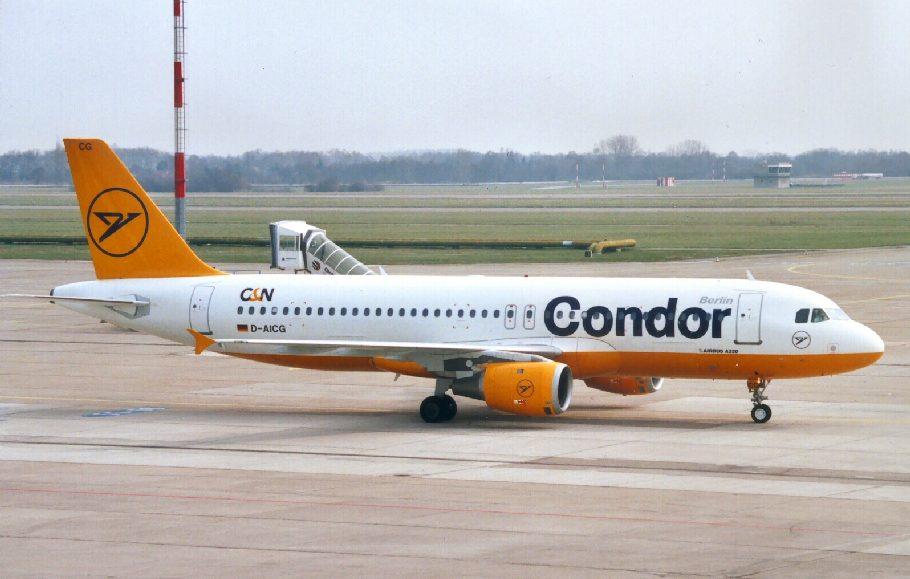
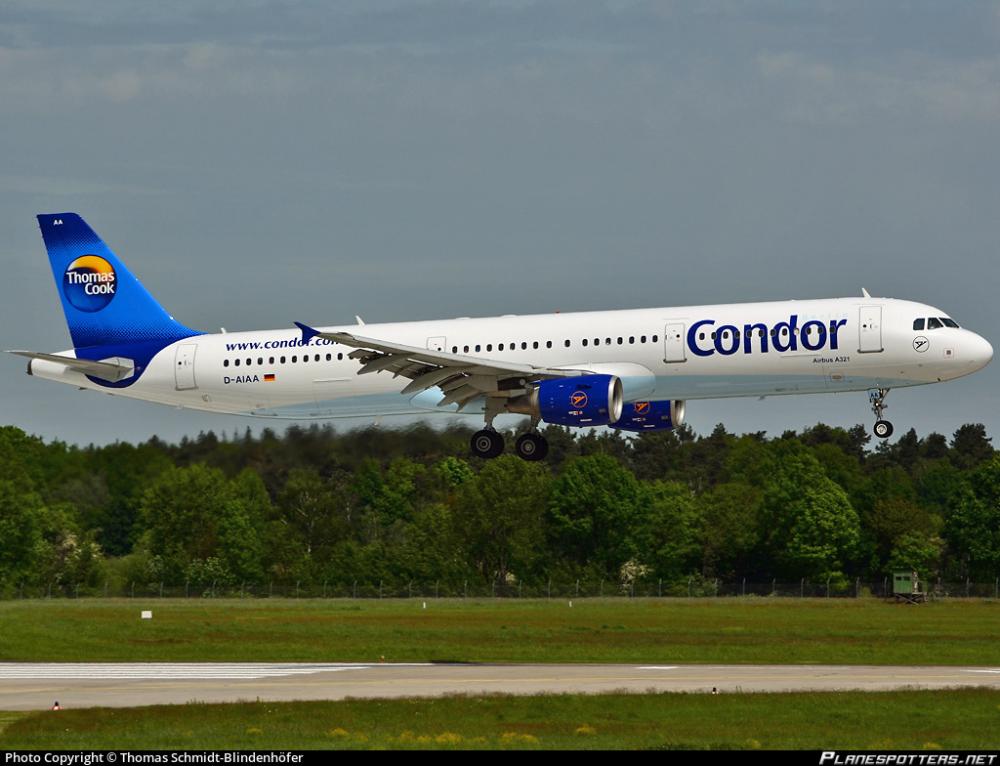
On 4 February 2013, the Thomas Cook Group announced that Thomas Cook Airlines, Thomas Cook Airlines Belgium, and Condor would be merged into a single operating segment of the Thomas Cook Group. On October 1, 2013 the Thomas Cook Group began presenting itself under a unified brand symbol. The aircraft of the Thomas Cook Group Airlines also had the Sunny Heart added to their tails and were re-painted in the new corporate color scheme grey, white, and yellow.
Condor refurbished the cabins on all of its Boeing 767-300 long-haul aircraft. The new Business Class seats offered fully automated, angled-lie-flat seats capable of inclining to an angle of 170 degrees with a bed length of 1.80 metres. On 27 June 2014, Condor completed the cabin refurbishment for all of its long-haul Boeing 767 aircraft. In the Summer season of 2016, newer Boeing 767-300ER were introduced.
In early 2017 Condor introduced a plan to cut operating cost by €40 million euros, because of the cost loss and the revenue drop, the previous year. The passenger numbers also dropped by 6%. Condor had also planned new routes into the United States (San Diego, New Orleans, and Pittsburgh). During 2017, it also introduced the Airbus A330-200 into its long haul operations from Germany.
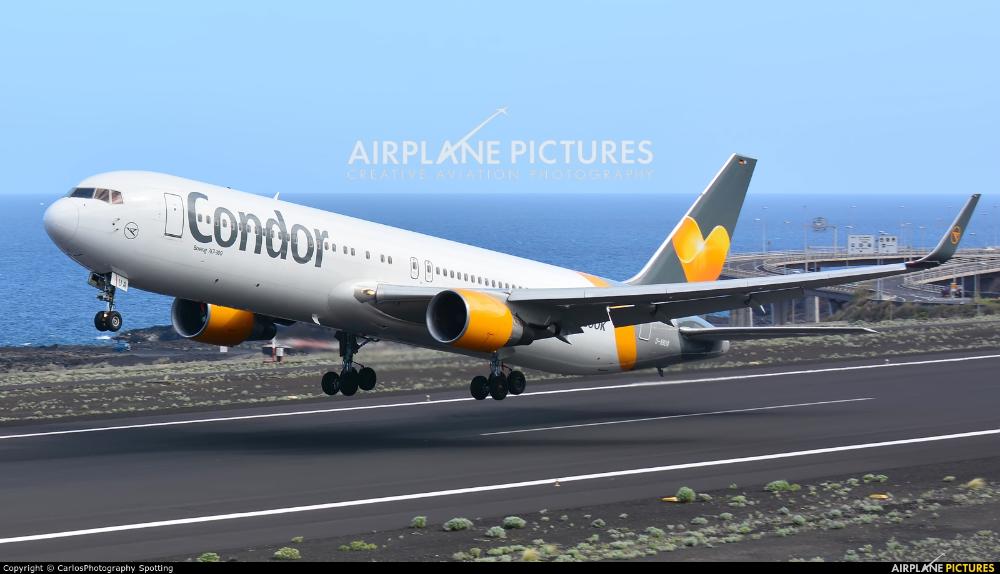
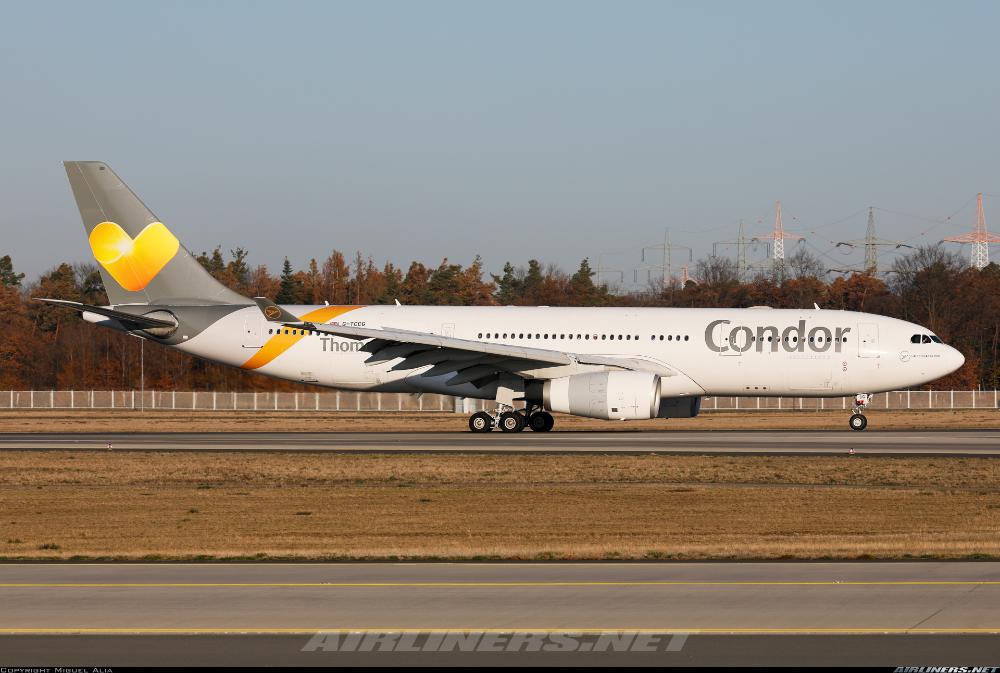
However, the cuts came a little too late for the group which Condor was under, and so on the 22 September 2019, Thomas Cook Group announced its liquidation. But luckily for Condor, only a few days later, the 25 September, the airline secured additional credit facilities of €380 million, from the German Government, to keep flying. On the same day, a Frankfurt court authorised investor protection measures to allow Condor to be restructured.
On 24 January 2020 Condor announced that PGL Polish Aviation Group would be buying Condor and the deal is expected to close in April 2020. However going forward Condor will continue to operate under their current brand and management.
History source: Wikipedia.org + airfleets.net + marketwired.com
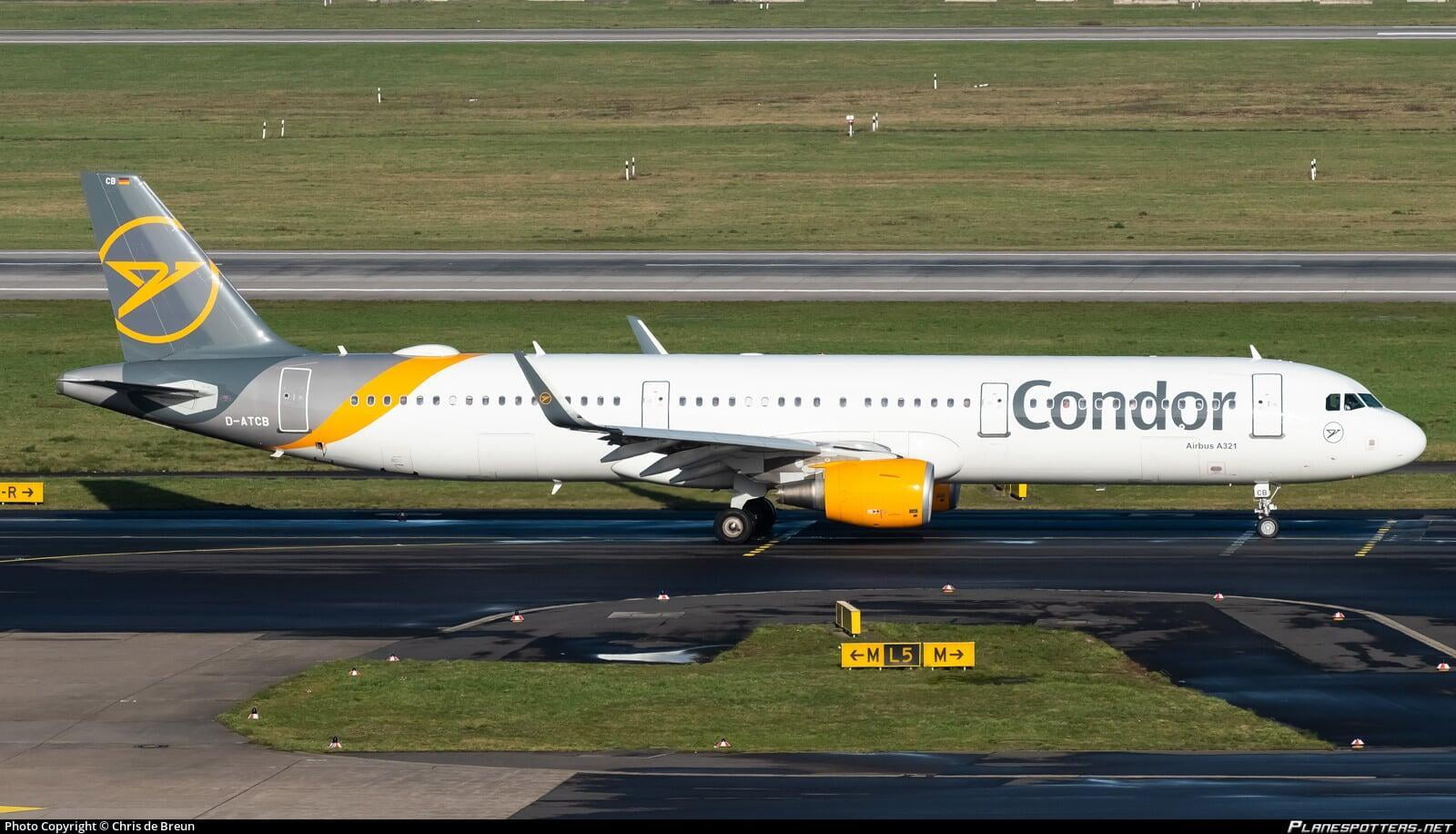
Operations and Destinations 🌍:
Its main base is located at Frankfurt Airport from which most of its long-haul flights depart. Secondary bases for Mediterranean flights are Munich, which also features long-haul flights, Hamburg, Hannover, Düsseldorf, Stuttgart, and Leipzig/Halle. Condor flies to 80 destinations throughout Africa, Asia, Europe, North America, and South America.
Condor flies to the following destinations* (The list does not contain destinations operated by Condor's codeshare and interline partners):
| Region 🗺️ | Destinations 🌍🌎🌏 |
|---|---|
| ✈Germany (bases) | Düsseldorf, Frankfurt (FRA), Hamburg, Hanover, Leipzig/Halle, Munich, Stuttgart |
| ✈Europe and Russia | Antalya, Arrecife, Chania, Comiso, Corfu, Dalaman, Fuerteventura, Funchal, Heraklion, Ibiza, Jerez de la Frontera, Kalamata, Kavala, Kos, Las Palmas, Malta, Mykonos, Palma de Mallorca, Porto Santo, Preveza, Rhodes, Russia, Santa Cruz de La Palma, Santorini, Skiathos, Sochi (Russia), Tenerife, Vienna, Volos, Zakynthos |
| ✈North America, Mexico and The Caribbean | St John's (Antigua and Barbuda), Christ Church, Varna, Calgary, Halifax, Toronto, Vancouver, Whitehorse, San José, Havana, Holguín, Santa Clara, Varadero, Willemstad, Puerto Plata, Punta Cana, Santo Domingo, Pointe-à-Pitre, Montego Bay, Fort-de-France, Cancún, San Juan, Vieux Fort, Scarborough, Anchorage, Baltimore, Fairbanks, Las Vegas, Los Angeles, Minneapolis, New Orleans, Phoenix, Pittsburgh, Portland, Seattle |
| ✈Africa | Agadir, Cape Town, Hurghada, Kilimanjaro, Mombasa, Port Louis, Windhoek, Zanzibar |
| ✈Asia | Kuala Lumpur, Mahé, Malé |
| ✈Brazil | Fortaleza, Recife |
*Destination list is for reference only. Please check directly with the airline for updates.
*Note some destinations are only seasonal.*Correct info as of October 2019.
Fleet ✈️:
Condor benefits from a mixed fleet of Boeing and Airbus aircraft which totals over 40 aircraft for the Condor subsidiary of the Thomas Cook Group. The parent company can transfer additional planes from the other subsidiaries in Belgium, Scandinavia or the United Kingdom depending on demand and season. Its common then, to see the aircraft switching bases across Europe to satisfy demand and season.
The fleet* of Condor (Germany) consists of the following aircraft:
| Network 🌐 | Aircraft ✈️ |
|---|---|
| ✈ Short and Medium haul | Airbus A320, A321. Boeing 757-300 |
| ✈Long haul✈Long haul | Boeing 767-300ER. (occasionally Airbus A330) |
*Correct fleet info as of October 2019.
Condor Photo Slide 📷:
Condor Safety Video (A320) 🎬:
Reviews ⭐:
 |  |
|---|---|
| ✅One of the oldest and most reputable airlines in Germany. | 👎 Charter flights, which are often not operated year round. |
| ✅Variation of destinations offered in Europe/Caribbean/Americas and Asia | 👎Less frequency of flights to certain destinations |
| ✅Tailored packages available or seat purchase only | 👎Entertainment options in Economy (long haul) are basic. (need to purchase full media access code) |
| ✅ Economy ticket includes luggage and meals (long haul). | |
| ✅ Comfortable seats | |
| ✅ Friendly cabin crew and service. |











.png)